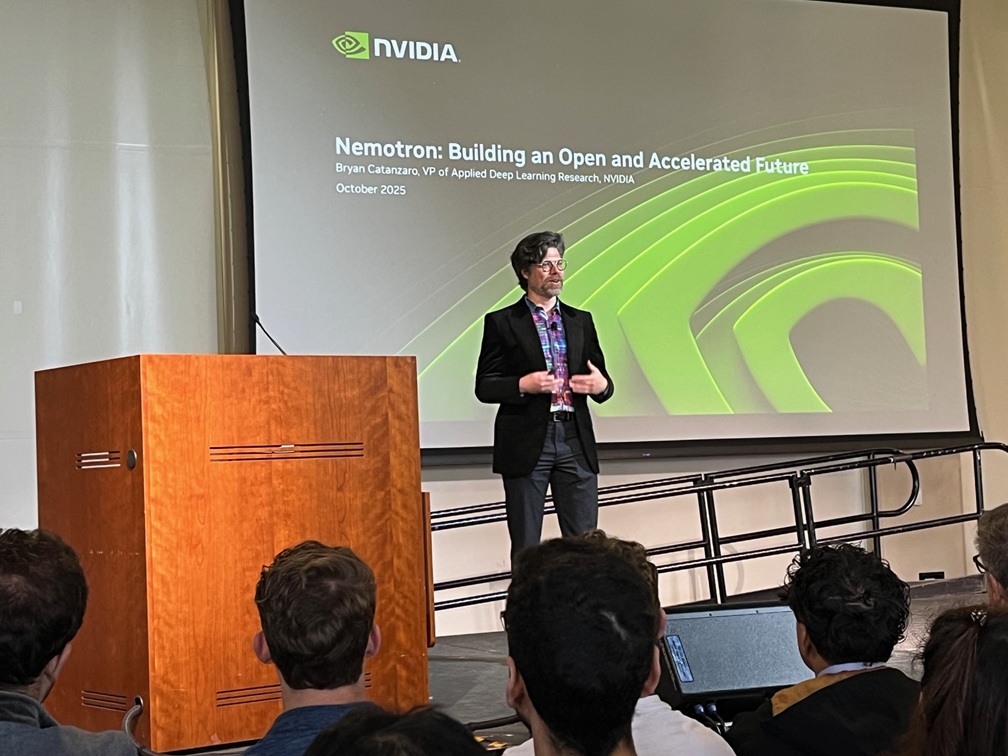The Bay Area Machine Learning Symposium, held on March 15, 2024, at Santa Clara University, gathered leading researchers and engineers to discuss the future of artificial intelligence (AI). With the widespread adoption of AI technologies like ChatGPT, the event showcased innovative ideas and technologies from companies such as Nvidia Corp., Apple Inc., and Google LLC. Presenters explored the evolving landscape of AI and its potential to reshape various sectors.
During the symposium, Bryan Catanzaro, vice president of applied deep learning research at Nvidia, highlighted the importance of addressing underlying problems in AI system development. He introduced Nemotron, a collection of open-source AI technologies aimed at streamlining AI development. This initiative includes multimodal models, datasets, and tools designed to enhance the efficiency of AI at every stage. Catanzaro emphasized that accelerated computing, a core part of Nvidia’s strategy, extends beyond hardware, focusing on specialized solutions tailored for unique tasks.
Catanzaro also pointed out the vital role of the open-source community in driving AI advancements. He noted that contributions from companies like Meta Platforms Inc. and Alibaba Group Holding Ltd. have significantly enriched the Nemotron datasets. “There’s been a lot of great contributions,” he remarked, underscoring the collaborative nature of AI research.
The historical context of AI was underscored by Christopher Manning, a professor at Stanford University and a prominent expert in natural language processing (NLP). He reflected on how large language models (LLMs) were largely overlooked by researchers just two decades ago. “There were zero [LLM papers] in 1993. Without 20/20 hindsight, it’s surprising no one was talking about language models,” Manning stated. His work paved the way for deep learning applications in NLP, a critical area driving AI growth.
Manning expressed concern that the current emphasis on immediate results in AI could overlook its potential for improvement through interaction with real-world data. He argued for the need for systematic generalization, which would enable AI models to learn effectively from fewer examples. He suggested that future AI systems should be capable of exploring and learning from their environments, akin to human learning.
In line with this vision, Apple Inc. is working on enhancing its machine learning software, MLX. This open-source framework, designed for Apple silicon, aims to optimize high-level Python code into efficient machine code. Ronan Collobert, a research scientist at Apple, emphasized the importance of creating machine learning software tailored to hardware needs. This initiative aims to streamline AI deployment in practical applications.
Meanwhile, Google LLC’s DeepMind has made strides in robotics. The company recently introduced its Gemini Robotics 1.5 and E.R. 1.5 models, which exhibit reasoning capabilities that allow robots to perform complex tasks. Ed Chi, vice president of research at DeepMind, highlighted the transition from narrow task execution to robots that can make decisions based on natural language prompts. Chi noted, “The huge advancement that we’re making in robotics right now is in the area of general robotics. It’s good enough.”
As the symposium concluded, there was a shared recognition that AI is advancing rapidly, impacting society and the economy in unprecedented ways. Manning reflected on the current period, stating, “We live in an absolutely extraordinary time. We are on a path where there’s going to be continual progress.” The discussions at the BayLearn symposium underscore the collaborative efforts driving AI innovations and the potential for transformative changes in various industries.
